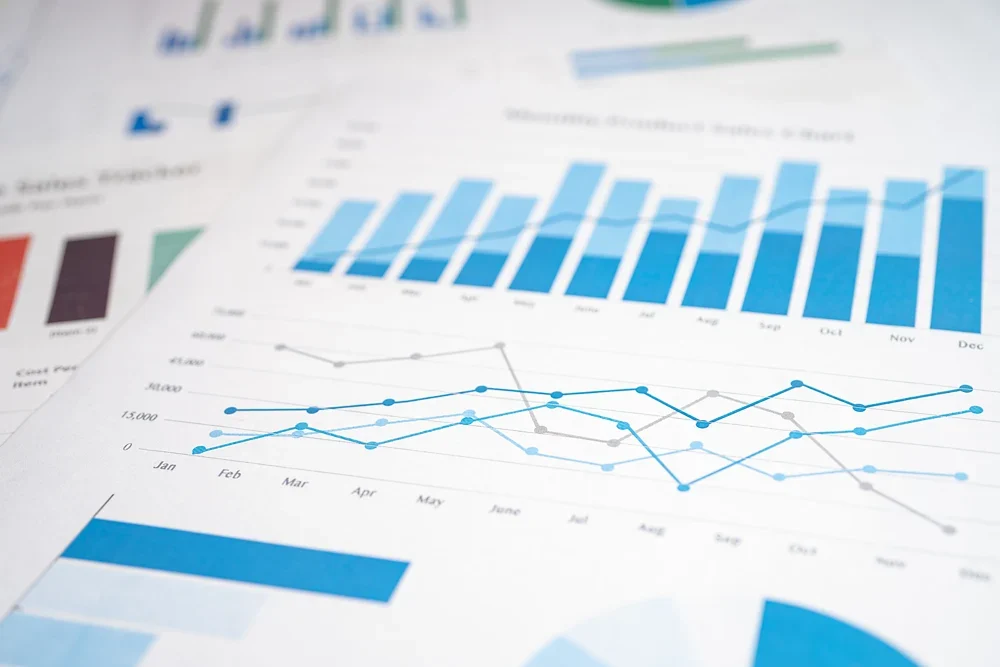Google Ranking: Understanding Google's Algorithm
Google’s algorithm is the backbone of determining and displaying search results. Its complex system evaluates numerous factors to deliver the most relevant results for any query. Understanding this algorithm is crucial for businesses and content creators to improve visibility and ranking higher on Google search results.
Let’s explore the workings of Google’s algorithm, the recent changes, and how you can optimise your website to climb the rankings.
How Google’s Algorithm Works
Google’s algorithm is a set of rules and criteria for ranking web pages. It uses various signals to determine the relevance and authority of a page for a specific search query. Here’s a simplified breakdown of how it works:
Crawling and Indexing
Google uses bots, known as spiders, to crawl the internet and discover new and updated pages. Once a page is found, it is indexed, meaning its content is analysed and stored in Google’s vast database. This process allows Google to retrieve and display relevant results quickly.
Ranking Factors
Google’s ranking algorithm considers over 200 factors. These include keyword usage, site structure, content quality, backlinks, and user experience metrics like site speed and mobile friendliness. Each factor has a different weight, contributing to a webpage’s overall ranking.
Machine Learning and AI
Google incorporates machine learning algorithms like RankBrain to understand complex queries and user intent. These systems can analyse search patterns and adjust rankings for the most accurate results.
Recent Changes to Google’s Algorithm
Google frequently updates its algorithm to enhance user experience and improve search result accuracy. Here are some recent significant changes:
BERT Update
The BERT (Bidirectional Encoder Representations from Transformers) update allows Google to better understand the context of words in a search query. It helps the algorithm interpret natural language queries more effectively, leading to more relevant search results.
Core Web Vitals
Google’s Core Web Vitals update focuses on user experience metrics like page loading speed, interactivity, and visual stability. Websites that perform well in these areas are likely to rank higher.
Mobile-First Indexing
With mobile searches surpassing desktop searches, Google has shifted to mobile-first indexing. This means the mobile version of a website is considered the primary version for indexing and ranking.
Passage Ranking
Google’s passage ranking update enables it to independently rank specific sections or passages of a page. This helps users find precise information, even buried within more significant content.
How to Improve Your Google Ranking
Improving your Google ranking involves optimising various aspects of your website. Here are some key strategies to consider:
Keyword Research
Understanding Keyword Intent
Keyword research is the foundation of SEO. It involves identifying the terms and phrases potential visitors use to find information related to your content. Tools like Google Keyword Planner can help you discover relevant keywords and assess their search volume and competition.
Long-Tail Keywords
Focusing on long-tail keywords, which are more specific and less competitive, can help you attract targeted traffic. These keywords often indicate a higher intent to purchase or engage with the content.
High-Quality Content
Creating Valuable Content
High-quality content is essential for SEO. It should be informative, engaging, and tailored to meet the needs of your audience. Content that provides value is more likely to be shared and linked to, enhancing its authority.
Regular Updates
Regularly updating your content ensures it remains relevant and accurate. Google favours fresh content, so keeping your articles, blog posts, and other content up-to-date can improve your ranking.
Backlinks
Building Quality Backlinks
Backlinks from reputable sites signal to Google that your content is trustworthy and authoritative. Focus on building quality backlinks through guest blogging, partnerships, and content marketing strategies.
Avoiding Spammy Links
Avoid acquiring backlinks from low-quality or spammy sites, as these can negatively impact your ranking. Google’s algorithm is sophisticated enough to distinguish between high-quality and poor-quality links.
Mobile Optimisation
Responsive Design
With the rise of mobile searches, ensuring your website is mobile-friendly is crucial. A responsive design adapts to different screen sizes, providing a seamless user experience across devices.
Mobile-Friendly Content
Optimise your content for mobile users by using concise text, readable fonts, and easily tappable buttons. Mobile-friendly content can significantly improve user engagement and satisfaction.
User Experience
Easy Navigation
A well-structured website with easy navigation enhances user experience. Users should be able to find the information they need quickly and easily, reducing bounce rates and increasing time spent on the site.
Clear Calls to Action
Clear and compelling calls to action (CTAs) guide users to desired actions, such as subscribing to a newsletter or purchasing. Effective CTAs can improve conversion rates and overall user satisfaction.
Site Speed
Improving Load Times
Site speed is a critical ranking factor. Slow-loading pages can frustrate users and lead to higher bounce rates. Use tools like Google PageSpeed Insights to identify and fix issues that slow down your site.
Optimising Images
Optimising images by compressing them and using appropriate file formats can significantly improve load times. Additionally, to leverage browser caching and content delivery networks (CDNs), we use Cloudflare to enhance performance.
HTTPS
Secure Your Site
Google prefers secure websites using HTTPS. Securing your site with an SSL certificate improves your ranking and builds trust with your visitors.
Migrating to HTTPS
If your site is still using HTTP, consider migrating to HTTPS. Ensure all pages and resources are correctly redirected to avoid disrupting your site’s performance and ranking.
Social Signals
Engaging on Social Media
While social signals (likes, shares, comments) are not direct ranking factors, they can influence SEO. Engaging content on social media platforms can drive traffic to your site, increasing its visibility and authority.
Sharing Content
Share your content on social media regularly to reach a broader audience. Encourage your followers to share your content to amplify its reach and impact.
Common Mistakes That Hurt Your Google Ranking
Avoiding common SEO mistakes is crucial to maintaining and improving your Google ranking. Here are some pitfalls to watch out for:
Keyword Stuffing
Overusing Keywords
Keyword stuffing, or the overuse of keywords, can harm your ranking. Google’s algorithm penalises content that appears spammy or over-optimised.
Natural Keyword Use
Instead, focus on natural and relevant keyword usage. Ensure your content reads well and provides value to the reader.
Ignoring Mobile Optimisation
Mobile Traffic
Ignoring mobile optimisation can significantly hurt your ranking. A mobile-friendly site is essential, as many users access the web via mobile devices.
Responsive Design
Implement responsive design to ensure your site adapts to different screen sizes and provides a seamless experience across all devices.
Slow Site Speed
User Frustration
Slow site speed can frustrate users and lead to higher bounce rates. Google prioritises fast-loading sites, so optimising your site speed is crucial.
Performance Tools
Use tools like Google PageSpeed Insights to identify and fix performance issues that slow down your site.
Poor-Quality Content
Lack of Value
Poorly written or irrelevant content can hurt your ranking. Google prioritises high-quality, informative, and engaging content.
Regular Updates
Update your content regularly to ensure it remains relevant and valuable to your audience. Fresh content can improve your site’s visibility and ranking.
Case Study: Success Stories of Improved Google Ranking
Company A:
From Page 10 to Page 1
Company A, a small e-commerce business, implemented a comprehensive SEO strategy focusing on keyword research, high-quality content, and backlinks.
Within six months, their ranking improved from page 10 to page 1 for several target keywords, significantly increasing their traffic and sales.
Company B:
Dominating Local Search Results
Company B, a local service provider, optimized their Google My Business profile and focused on local SEO strategies.
They saw a significant increase in local search visibility and customer inquiries, establishing themselves as a leader in their local market.
Improve Your Google Ranking Now
Get Started with SEO
Improving your Google ranking is a continuous process that requires strategic planning and consistent effort. By understanding Google’s algorithm, keeping up with its updates, and applying best practices in SEO, you can significantly enhance your online presence.
Stay Updated with Google’s Algorithm Changes
Everything is constantly evolving, and Google’s algorithm is no exception. Staying updated with the latest changes and trends in SEO is essential to maintain and improve your ranking. Subscribe to SEO news sites, follow industry experts, and regularly review your SEO strategy to ensure it aligns with current best practices.
Implementing the strategies discussed in this article can improve your website’s ranking, drive more traffic, and achieve your online goals. Remember, SEO is a long-term investment that pays off with increased visibility, higher conversion rates, and a more robust digital presence.
Improving your Google ranking is within your reach. Start by focusing on keyword research, creating high-quality content, building backlinks, and optimising for mobile and user experience.
Use the right tools to analyse and enhance your SEO efforts and avoid common mistakes hindering your progress. With dedication and the right approach, you can climb the Google search rankings and succeed online.









